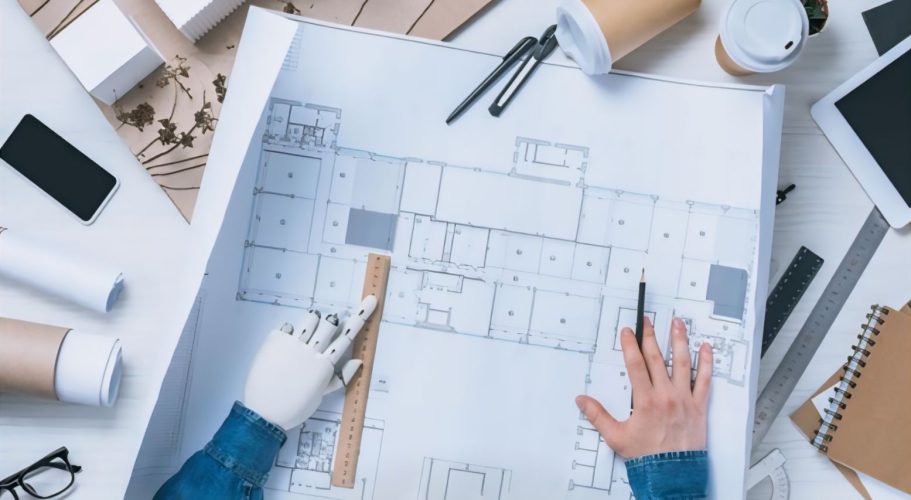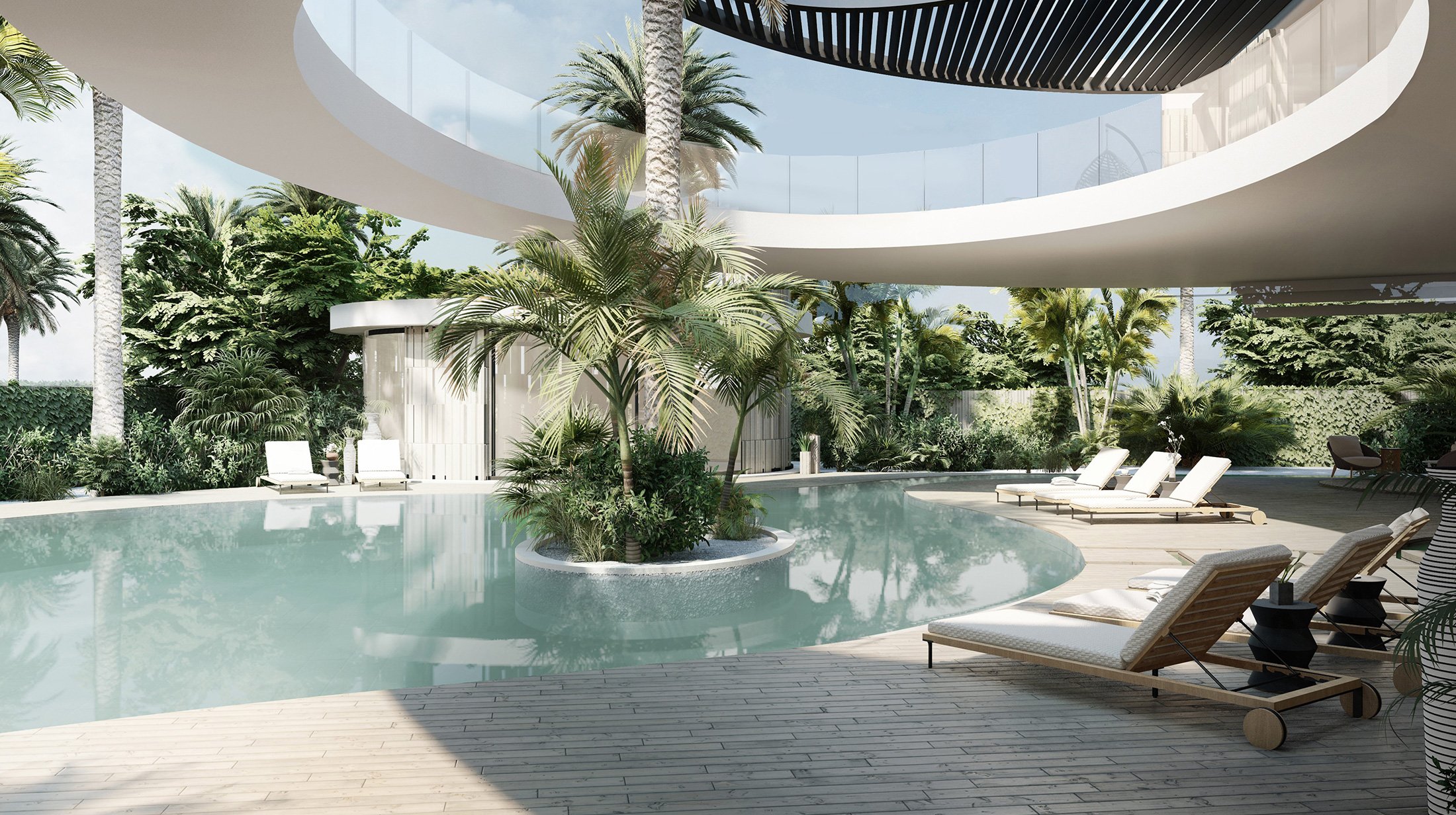
5 min read

Architectural innovations have been incessantly emerging and evolving ever since the beginning of the digital age we are living in. While some of these technologies are still witnessing tremendous changes and developments, this ensemble of creative new methods is bound to change the face of architecture as we know it.
Our experts at Joe Aoun Architecture have rounded up 5 amazing and innovative architectural technologies they think future architecture must not live without.
1. Virtual and augmented reality
According to an article published on Enscape’s website, 9 out of 20 major architecture firms across the globe are using VR for design processes. So, it is safe to say that virtual reality is not just a game anymore.
Architecture firms such as Zaha Hadid Architects, Partisans Architecture, Arturo Tedeschi Consulting,
Visual-Wise, theConstruct, Stambol Studios, IrisVR, Inc., and others are some examples of the internationally leading firms that have resorted to making pivotal shifts in business through VR technology.
Why all the hype you might ask? First, VR technology makes design efficient and accessible for all by building and optimizing relationships between different spaces, light, construction, and materiality used in a project.
Not only does it create an unmatched user experience for architecture companies’ clients, but also enhances partnerships as this technology has minimized the need to be connected physically to do business, made tracking the design progress and communicating design stages easier, and reduced the time required to act upon the feedback and reflect it in the designs.
As for augmented reality, it goes side by side with virtual reality. While virtual reality creates the realworld environment itself, augmented reality creates an enhanced, interactive version of it, using digital visual elements, sounds, and other sensory stimuli via holographic technology. In other words, AR adds new layers to the already existing environment.
2. Touchable holograms
3D virtual objects which can be manipulated by hand; that sounds straight out of a sci-fi movie! Holography has a chance to drastically change how we imagine and experience architecture.
Throughout the years, architecture projects have made noticeable evolution with holography, as they went beyond the use of holograms to visualize structures and sites during the design phase. Architects from all around the world now utilize holography to shape the completed architectural space itself, completely altering the sensory and spatial experience of their environment.
How do holograms work? Holography is a unique method of photography: 3D objects are recorded using a laser and then restored as precisely as possible to match the originally recorded object. When illuminated via a laser, holograms can form an exact 3D clone of the object and duplicate its features.
What makes it even more interesting and realistic is that when a person’s hand touches the 3D image, the hologram emits ultrasonic radiation pressure, making the user feel like they are physically touching the object.

3. Robot architecture
Though having existed for a while now and have been used in many different industries, robotic applications have come a long way in the realms of construction and architecture.
Having been developed to increase their efficiency, robots have become lighter, smarter, and most importantly, able to multitask. But the real jump was making robots learn with Artificial Intelligence (AI).
The advantages of integrating automatic and robotic applications into construction and architecture are strongly felt nowadays. Not only do they boost productivity, set new levels of construction speed, and reduce waste but also cut costs significantly as human labor would decrease, making building prices more affordable.
Robots can literally go to the construction site itself and apply what humans once did. From architectural structures to space-based constructions, architects and designers bring these technologyleveraging processes into the real architecture world in new creative ways and methods of design.
Here are a few robot-manufactured projects our experts at Joe Aoun Architecture deem groundbreaking:
- Tongji university bridge
- Landesgartenschau Exhibition Hall
- Olympus Project
- ICD/ITKE Research Pavilion 2015-16

4. Tilt Brush by Google
This one is guaranteed to get your creative juices flowing like never before! Tilt Brush is a room-scale 3D painting virtual reality application developed and published by Google, and arguably one of the most playful and artistic innovative tools.
In other words, Tilt Brush technically turns any room into a canvas that lets you capture all your creativity, allowing you to paint in real size with 3D brushes.
With its dynamic brushes, virtual palettes, and intuitive interface, Google Tilt Brush allows you to experience painting from a new perspective.
This technology can be integrated with virtual reality systems such as Oculus and HTC Vive. Offering amazingly advanced features and tools from ink and smoke to snow and fire, brush materials and shaders, and audio-reactive features, Tilt Brush by Google allows creators to extend their art and expand their canvases.
Allowing immersive virtual reality sketching, architects and designers can easily create environments and play with lighting – among other possibilities – with this fun-to-use technology.
5. 3D printing
Though older than other technologies, 3D printing is still one of the most popular and widespread technologies in the architecture industry.
Architects are now considering 3D-printed structures as the new way to optimize construction with minimal waste as the traditional construction process takes too much time and too many steps.
It is no wonder architecture achieved via 3D printing is now all the rage. Not only does it cut labor time and streamline coordination, but it also allows architects to concretize high-precision architectural models enabling all sorts of curvy and textured forms.
Add to that the fact that 3D-printed designs can be easily replicated across the globe. This actually creates a sustainable and commercially viable approach to architecture.

It has become undeniable that the winds of change have already set sail.
The stated architectural innovations and many others are inevitably transforming the realms of architecture, construction, and design.
These technologies, though still evolving and changing, will be able to solve different problems faced by the architecture, construction, and design industries, from sustainability to cost, time, and space. Our team at Joe Aoun Architecture has undeniably felt this positive impact on our working process, from the design phase to the construction site. So, instead of resisting the inevitable, why not embrace it and make the most out of it?

